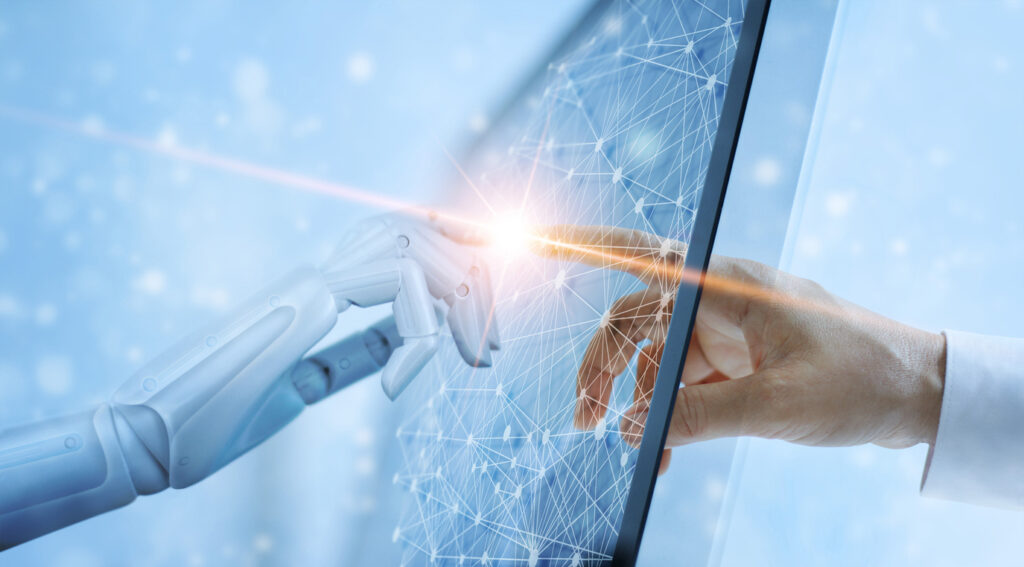As artificial intelligence advances, it’s the human qualities of our employees that we will value the most – and those with the right mix of soft skills will be most in demand.
The attitudes and behaviours needed to thrive in the modern workplace are changing. With digital transformation, increased automation and artificial intelligence (AI), skills-based training is quickly out of date.
According to recruitment website Seek, some of the buzzwords that employers are now keen to hire for are adaptability, resilience and empathy. It’s worth noting that all of these qualities are recognised attributes of emotional intelligence (EI).
HR and L&D teams need to realise that providing skills training is no longer enough.
Mindset and the ability to manage our own emotions, and those of our colleagues, clients and customers, is equally important.
This is EI, and organisations who build EI into their thinking and approach to employee recruitment, development and retention have a competitive advantage.
Why EI?
Research consistently shows that many employees are experiencing low levels of engagement, job satisfaction and commitment. As well as affecting employee wellbeing, this has an impact on the bottom line.
A survey by Freedman reported that 97% of employees said they could be more productive, with 49% of this group saying they could be 50% more productive.
Despite technological advancements that are designed to make life easier, there is clearly something missing in today’s workplaces.
Change is needed and EI presents a solution that achieves the holy trinity for any construct of personal or professional development:
- EI can be developed.
- EI is measurable.
- EI can make a positive difference to a person’s performance and effectiveness.
The business demand
There’s an increasing need for emotionally intelligent employees to meet the demands of current day working, and more organisations are buying into EI as a result.
Changes taking place in the workplace, and the EI attributes that can be developed to deal with them, include:
- The rate of change: advances in technology and increased access to information come with a high human toll, as employees are expected to be more adaptable and responsive to shifting circumstances. In order to cope, individuals must be self-aware and notice their automatic and habitual responses, and then learn how to move outside of their comfort zones.
- Increased competition: this comes with globalisation and times of economic crisis. Several EI attributes, such as resilience to survive and persevere after setbacks, the ability to connect with clients, and a positive rather than a pessimistic outlook, are all required to come out on top.
- Increased job demands: despite improved efficiency and speed in operating technology, many employees are working longer hours and managing a higher information load and job variety than ever before. EI helps people to manage their emotional state under these challenging conditions. This may include self-regard, regard for other people, self-awareness and reflective learning.
Emotional labour
Our research shows a significant correlation between performance and elevated levels of EI in roles where there is high emotional labour (Hughes and Maddocks 2018).
What’s more, where flexibility and working with others are key, EI measures are more predictive of performance than traditional personality tests. This is significant, as relationships and the ability to collaborate are becoming increasingly important in the workplace.
HR analytics and AI rely on large, accurate data sets. Since EI can be measured, it provides valuable insights for HR teams to make more informed decisions.
It has been estimated that around 80% of activities in an organisation involve some level of collaboration.
Team members with high EI will positively value and respect each other and be more likely to be open and attentive towards one another.
This leads to strong and effective relationships and, perhaps most importantly, a team that is united by shared beliefs and confidence will be more motivated, engaged and able to achieve what it sets out to do.
EI of leaders
The EI of a business leader is crucially important and has a strong impact on the whole team by raising or lowering the emotional atmosphere – that’s why EI is even more critical for management roles.
If organisations recruit for EI but the leadership climate fails to value or reward these qualities, they won’t reap the benefits.
An organisation’s leader will set a tone from the top with their attitude and behaviours.
This impacts the extent to which individuals are empowered to do what they feel is right while still being clear about boundaries.
By setting appropriate goals, providing constructive feedback and supporting their team, a leader can establish a positive climate where employees feel recognised, valued and rewarded.
EI of organisations
Whatever activities it engages in, a team or organisation is more effective when it harnesses the full potential of all its employees.
The climate of an organisation is an integrated and interdependent whole, comprising of individuals, teams and the organisation, and this climate can either significantly promote or inhibit emotionally intelligent behaviour.
People who have high EI are adept at managing their personality to be personally and interpersonally effective.
The impact of improved engagement can be seen at an organisational level in terms of productivity, profitability, reduced turnover and improved wellbeing.
Creating an encouraging environment within the organisation will encourage teams to have higher morale, and this will in turn support individual self-regard.
Equally, coaching and supporting individuals will ripple into their relationships, which in turn will cascade across the organisation.
In other words, development can work through the individual, in teams, and across the organisation, but by far the greatest and most sustainable impact is achieved by applying all three elements.
Being effective
There are new, dynamic, assessment tools that are able to recruit for EI, at the same time as highlighting areas for future development.
This builds engagement and growth throughout the employee lifecycle and can focus on key areas for a business such as resilience, team EI or leadership.
HR analytics and AI rely on large, accurate data sets. Since EI can be measured, it provides valuable insights for HR teams to make more informed decisions.
A Leadership Climate Indicator (LCI), for example, can focus on the behaviours of leaders as a key factor in determining the emotional climate or tone set within an organisation. It helps leaders to build trust and cultivate a sustainable culture for high performance.
In turn, data from the LCI provides a rich resource for implementing appropriate development programmes at a team or individual level, with the potential to use online tools and apps to measure, track and report on progress.
[cm_form form_id=’cm_65a14c3f5da64′]
People who have high EI are adept at managing their personality to be personally and interpersonally effective.
Teams that have high EI are far better able to collaborate and adapt to sustained pressure and changing demands.
To ensure future success, organisations should be recruiting and developing employees who are emotionally intelligent – from the shop floor to the boardroom.
Interested in this topic? Read Emotional intelligence: Do you know the four basic components?






